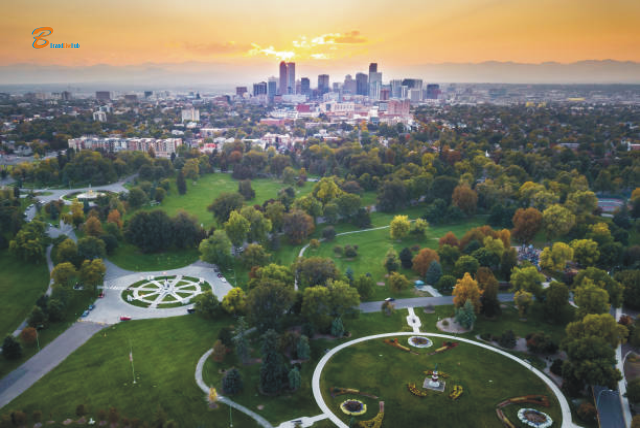Donald Trump America | A New Era of Populism and Controvers
Contents
Introduction to Donald Trump
Donald Trump has become the president of the United States many times. In my personal opinion, he has done justice to the people of his country. Every need of the people has been fulfilled. That is why the people make him the president by voting again and again.
Donald John Trump was born on June 14, 1946, in Queens, New York City. He is a prominent American businessman. He is also a television personality and politician. Most notably, he served as the 45th President of the United States from 2017 to 2021.
Spouse: Donald Trump is married to Melania Trump (née Melania Knauss), a former fashion model. They married in 2005 and have one son together, Barron William Trump, born in 2006.
Children: Donald Trump has five children from his previous marriages:
- Donald Trump Jr. (born December 31, 1977) – with first wife Ivana Trump.
- Ivanka Trump (born October 30, 1981) – with first wife Ivana Trump.
- Eric Trump (born January 6, 1984) – with first wife Ivana Trump.
- Tiffany Trump (born October 13, 1993) – with second wife Marla Maples.
- Barron Trump (born March 20, 2006) – with current wife Melania Trump.
Vice President: Trump’s vice president during his presidency was Mike Pence, who served from 2017 to 2021.
Political Party: Donald Trump is a member of the Republican Party. He switched from the Democratic Party in 1987. He ran for president as a Republican in 2016.
Parents: Trump’s parents were Fred Trump, a real estate developer, and Mary MacLeod Trump, a Scottish immigrant.
Height: Donald Trump is approximately 6 feet 3 inches (191 cm) tall.
Trump Tower rising above Riverwalk downtown Chicago.
Donald Trump’s rise to political prominence marked a dramatic shift in American politics. It ushered in a new era of populism and controversy. Trump was once a billionaire businessman and reality TV star. His 2016 presidential campaign captured the imagination of millions. It challenged traditional political norms and sparked intense debate across the nation. His populist message had slogans like “Make America Great Again.” This message resonated with working-class Americans. They felt left behind by the political elite. However, his bold rhetoric and unconventional style also made him a deeply polarizing figure in modern American history.
Understanding Trump’s Populism and Controversial Legacy
Trump’s populism was unlike any seen before in U.S. politics. He framed himself as an outsider who would confront Washington, promising to “drain the swamp” of corruption and inefficiency. His message was simple but powerful: reclaim American jobs, prioritize national interests, and reject globalism. This resonated with millions of voters frustrated with globalization, immigration policies, and economic disparities.
However, Trump’s legacy is equally marked by the controversies he ignited. His direct style, particularly on issues like immigration, race, and foreign policy, often drew sharp criticism. His critics accused him of divisive and inflammatory rhetoric, while his supporters admired his “tell it like it is” approach. This mix of populism and controversy shaped his presidency. It also influenced the political landscape of America for many years.
The Evolution of Populism in Modern America
Populism in America isn’t a new concept. Throughout history, movements have emerged that sought to challenge the political and economic elite. But Trump’s populism reshaped this tradition, blending nationalism with economic protectionism. His campaign tactics focused on direct engagement with the people. He used social media platforms like Twitter. Through these platforms, he bypassed traditional media to speak directly to his base.
Trump’s rise pushed the Republican Party further to the right, emphasizing nationalism, anti-globalization, and skepticism of long-standing international agreements. Meanwhile, populist movements on the left, like those led by Bernie Sanders, pushed for greater economic reforms. They advocated for healthcare change. These movements also tapped into the frustration of voters who felt that the system was rigged against them.
Key Moments in Trump’s Political History
Trump’s presidency was defined by key moments that shaped his legacy. From the 2016 campaign to his controversial 2020 re-election bid, he made bold moves during his time in office. These actions left deep marks on American society and politics. Major policies included tax cuts, strict immigration laws, and renegotiated trade deals. His supporters praised these policies. However, his opponents heavily criticized them.
Perhaps the most contentious moment of Trump’s presidency came after the 2020 election. Despite losing to Joe Biden, Trump refused to concede. He promoted baseless claims of election fraud. These actions led to the January 6 Capitol riot. This further divided the nation and cemented his controversial place in American political history.
The Role of Media in Trump’s Rise
Trump’s relationship with the media was one of the most defining aspects of his political career. He often had a combative attitude toward journalists and news outlets. His relentless use of social media kept him at the forefront of the national conversation. Traditional media outlets criticized his rhetoric and policies. Meanwhile, Trump used platforms like Twitter to communicate directly with his supporters. He circumvented the media’s control over the narrative.
This unfiltered communication fueled both his popularity and the polarization of American society. For many, Trump’s social media presence was a way to connect with their concerns. It made them feel heard. However, others saw it as a threat to democratic norms. It also challenged journalistic integrity.
Trump’s Lasting Impact on American Society and Politics
The impact of Trump’s populist leadership on American society is undeniable. His presidency pushed issues like immigration, economic nationalism, and the role of government to the forefront of public discourse. His influence reshaped the Republican Party. It also reshaped the broader American political landscape. This made populism a key political force. Populism continues to define political divisions today.
As America looks forward, Trump’s legacy remains a topic of debate. To his supporters, he remains a champion of the “forgotten American,” someone who fought for their interests in Washington. To his detractors, he represents a shift away from unity, decency, and respect in political discourse. Whatever the perspective, it’s clear that Donald Trump’s America has left an indelible mark on the nation.
Summing Up: Donald Trump’s America and the New Era of Populism
Donald Trump’s rise to power marked a transformative moment in American politics. It redefined the nation’s political landscape with his populist rhetoric. His controversial leadership played a crucial role. He embraced nationalism and showed skepticism toward globalism. His direct approach to issues like immigration, the economy, and trade resonated with millions of Americans. They felt ignored by the traditional political elite. Yet, his presidency was equally characterized by divisive rhetoric and contentious policies that left the nation sharply divided.
Trump’s influence on American society, politics, and global relations is undeniable. Some see him as a champion of the working class. Others view him as a destabilizing force. His legacy shapes the Republican Party. It also influences the broader political discourse. Populism has become a central theme in modern American politics. As America progresses, Trump’s era will significantly influence the nation’s evolving political identity. This period will remain crucial in shaping future political dynamics.









One Comment